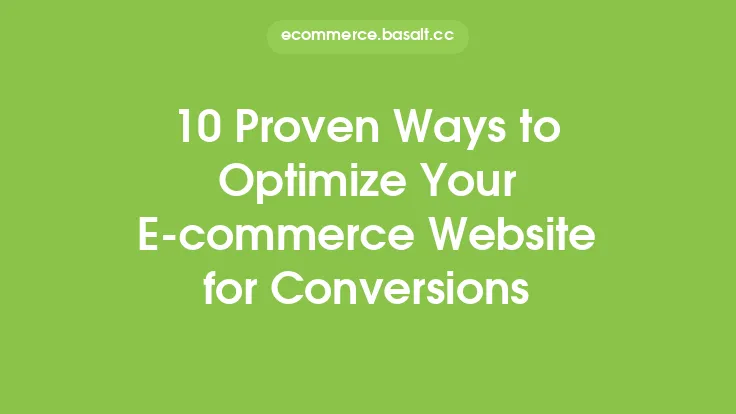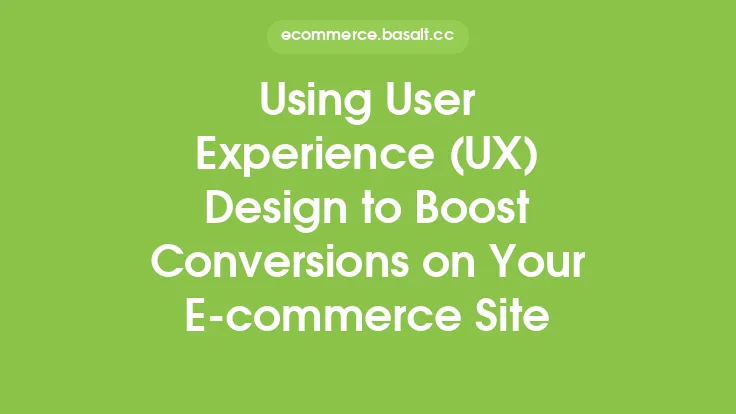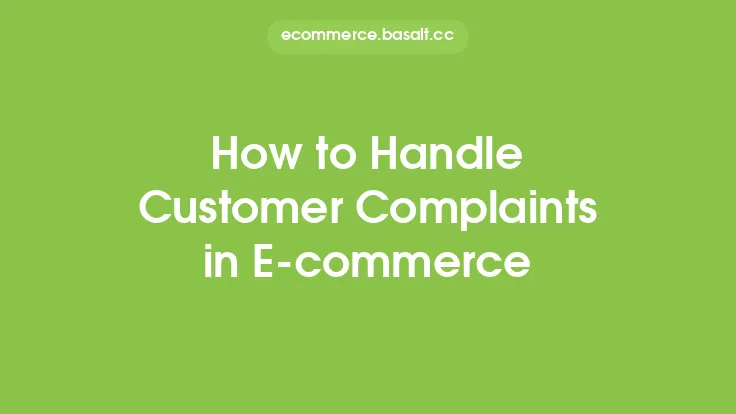Establishing trust with your e-commerce website design is crucial for converting visitors into customers and building a loyal customer base. When a customer visits your website, they are looking for a seamless and secure shopping experience. A well-designed website can help establish trust and credibility, while a poorly designed website can drive customers away. In this article, we will explore the key elements of e-commerce website design that can help establish trust with your customers.
Introduction to Trust-Inducing Design Elements
A trust-inducing design is one that is transparent, intuitive, and professional. It should clearly communicate your brand's message and values, while also providing a seamless user experience. Some key design elements that can help establish trust include a clear and concise navigation menu, high-quality product images, and a prominent display of customer testimonials and reviews. Additionally, a trust-inducing design should also include elements that promote transparency, such as a clear and easy-to-understand return and refund policy, and a prominent display of contact information.
The Importance of Professionalism in E-commerce Website Design
A professional-looking website is essential for establishing trust with your customers. A website that looks outdated, cluttered, or unprofessional can give the impression that your business is not reputable or trustworthy. On the other hand, a modern and sleek website design can convey a sense of professionalism and expertise. To achieve a professional-looking website, it's essential to use high-quality images, clear and concise typography, and a consistent color scheme. Additionally, a professional website should also be optimized for mobile devices, to ensure that customers can have a seamless shopping experience regardless of the device they use.
Building Credibility with Content
Content plays a crucial role in establishing trust and credibility with your customers. High-quality and engaging content can help to build trust by providing customers with valuable information and insights about your products and services. Some key content elements that can help establish trust include product descriptions, customer testimonials, and blog posts. Product descriptions should be clear and concise, and provide customers with all the information they need to make an informed purchasing decision. Customer testimonials and reviews can also help to build trust by providing social proof and demonstrating that your business has a track record of satisfied customers. Blog posts can also help to establish trust by providing customers with valuable information and insights about your industry and products.
The Role of Visual Hierarchy in E-commerce Website Design
Visual hierarchy refers to the way in which visual elements are organized and prioritized on a website. A clear and effective visual hierarchy can help to establish trust by guiding customers through the shopping process and providing them with a clear and intuitive user experience. Some key elements of visual hierarchy include typography, color, and imagery. Typography should be clear and concise, and used to draw attention to key elements such as calls-to-action and product information. Color should be used to create a consistent brand identity and to draw attention to key elements. Imagery should be used to break up text and provide customers with a visual representation of products and services.
Creating a Consistent Brand Identity
A consistent brand identity is essential for establishing trust with your customers. A consistent brand identity can help to create a sense of familiarity and recognition, and can also help to convey a sense of professionalism and expertise. Some key elements of a consistent brand identity include a clear and concise logo, a consistent color scheme, and a consistent typography. A clear and concise logo should be used consistently across all marketing channels, including your website, social media, and advertising. A consistent color scheme should be used to create a cohesive and recognizable brand identity. A consistent typography should be used to create a clear and intuitive user experience.
The Impact of White Space on E-commerce Website Design
White space, also known as negative space, refers to the empty space between and around elements on a website. White space can help to establish trust by creating a clean and uncluttered design that is easy to navigate and understand. A website with too much clutter and not enough white space can give the impression that your business is disorganized and unprofessional. On the other hand, a website with plenty of white space can convey a sense of simplicity and elegance. To use white space effectively, it's essential to strike a balance between content and empty space. Too much white space can make a website look empty and unengaging, while too little white space can make a website look cluttered and overwhelming.
Best Practices for E-commerce Website Design
There are several best practices that can help to establish trust with your e-commerce website design. Some key best practices include using high-quality images, providing clear and concise product information, and making it easy for customers to contact you. High-quality images can help to provide customers with a clear and accurate representation of products, and can also help to create a sense of professionalism and expertise. Clear and concise product information can help to provide customers with all the information they need to make an informed purchasing decision. Making it easy for customers to contact you can help to establish trust by providing customers with a sense of support and assistance.
Conclusion
Establishing trust with your e-commerce website design is crucial for converting visitors into customers and building a loyal customer base. By using trust-inducing design elements, such as a clear and concise navigation menu, high-quality product images, and a prominent display of customer testimonials and reviews, you can create a website that is transparent, intuitive, and professional. Additionally, by building credibility with content, creating a consistent brand identity, and using white space effectively, you can establish a sense of trust and credibility with your customers. By following best practices for e-commerce website design, you can create a website that is trustworthy, professional, and effective at converting visitors into customers.





